#Sculpture of Constantine the Great
Explore tagged Tumblr posts
Text
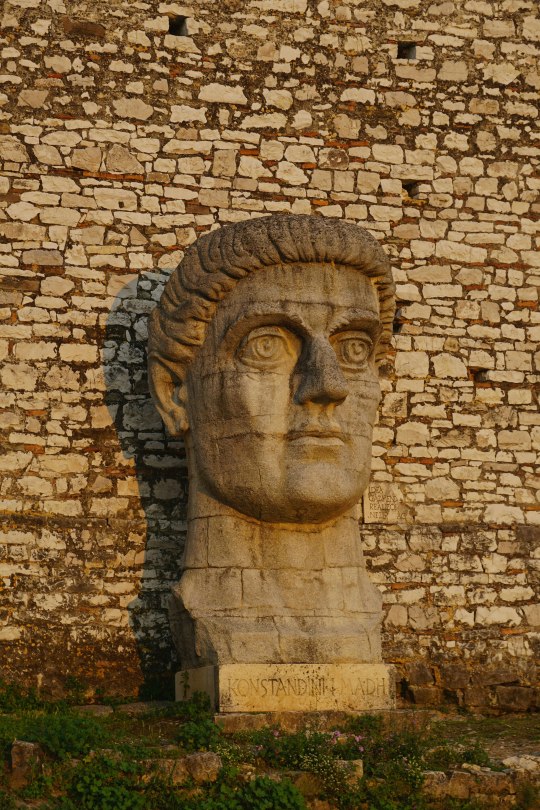

Sculpture of Constantine the Great, Berat, Albania
Vladan Raznatovic
#Sculpture of Constantine the Great#Berat#Albania#Europe#Sculpture#Statues#Statue#AlbaniaArt#Art#Constantine the Great
7 notes
·
View notes
Text
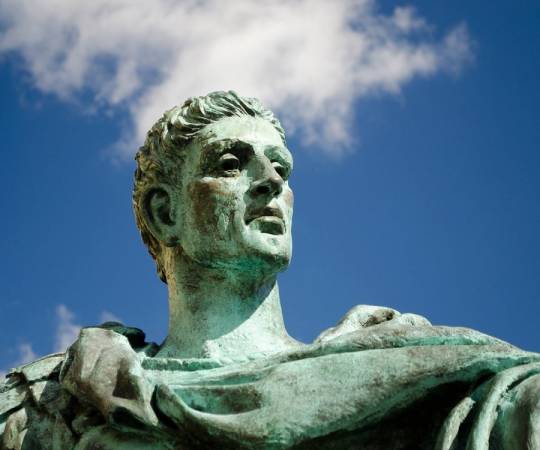
0 notes
Text
Sculptor Philip Jackson, York , England UK


“Constantine the Great”, commemorates the accession of Constantine as Roman Emperor in AD 306. York Minster, UK.
233 notes
·
View notes
Text

Dome of St. Peter's Basilica. Photo courtesy Andrea Gugni (©)

Photo: Lamberto Zannotti via Wikimedia Commons
In 64 AD, during the reign of Nero, many Christians were blamed for the Great Fire of Rome. The Apostle Peter, the first Bishop of Rome, was martyred along with several faithful near the Egyptian obelisk that stood in the Circus of Nero. The obelisk had been brought from Heliopolis by order of Caligula in 37 AD and is the one that stands today in St. Peter's Square. Apostle Peter was buried on Vatican Hill, along the Via Cornelia, which branched off from the Circus. Peter's tomb was marked with a rock that Christians used to identify it; soon after, Christians built a "cella memoriae" (a small memorial shrine) on that spot being for 3 centuries one of many places of clandestine worship.
The construction of St. Peter's Basilica was ordered by Emperor Constantine the Great, who wanted it to be built in a more central and "prestigious" location rather than on Vatican hill, which is located on the opposite side of Rome's seven hills and was considered a marginal location. However, Sylvester I, Bishop of Rome, earnestly asked the Emperor to build the Basilica on the site of St. Peter's tomb and the cella memoriae.
Construction began in 326 and lasted 30 years until its completion. The Basilica was expanded in the following centuries, reaching the ancient site of the Circus of Nero.

Photo: Diego Delso via Wikimedia Commons
The dome of St. Peter's was built by Michelangelo Buonarroti, who immersed in the Renaissance atmosphere, in which the art and architecture of Ancient Rome had been reborn, was inspired by the Pantheon, as well as by the sculptures, frescoes and decorations typical of the late Republica and the first two centuries of the imperial era.
122 notes
·
View notes
Note
Can you tell me the defining features and propogandic elements of busts from the different dynasties of Republic and Imperial Rome? That sounds super interesting and I'd love to hear about it!
Strap in.
Okay so the period that I’m going to be going over is roughly the span of time from the Republic period of Rome, all the way to Constantine, because that was the time frame my class covered.
So, to keep in mind, all of the portraits of Roman officials, whether they be emperors or otherwise, are idealized. Meaning, they are not true to life representations of these people; this is probably not how they actually looked, and you’ll see this become more prominent when we get into the imperial periods of Rome. What these portraits are in reality, are representations of traits that Romans typically admired and thought to be appropriate for rulers.
When you look at a lot of portraits from the Republic period, you’ll mainly see portraits of older people. During this time, only older people were allowed to hold powerful positions within the Roman senate, and since these were generally the people commissioning portraits of themselves, this is the bulk of what we see. It was mostly men, but some women were also depicted, which we’ll get to.
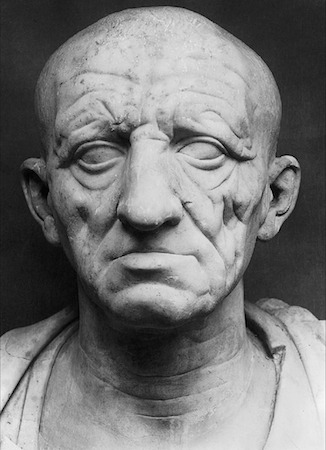
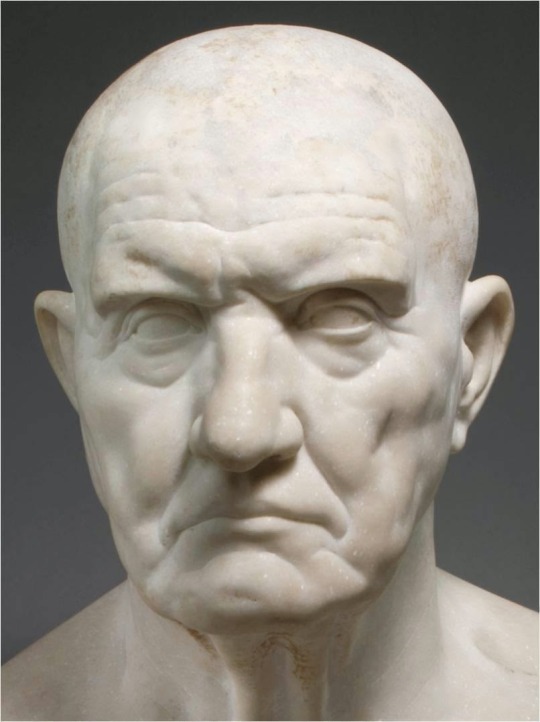
These busts portray older men, but these aren’t entirely realistic portraits, this is probably not what this individual actually looked like.
The official name for this style of portraiture is called verism, and it’s worth noting that it is pretty much a direct response to the style of the Hellenistic Greeks, who’s dynamic, emotional statues were seen as uncontrolled, with rule breaking tendencies.
These portraits are much older looking, because an older person was the physical embodiment of the kinds of traits someone from the patrician class would favor; traits such as wisdom, worldliness, piety, self-restraint. The wrinkles in the forehead and around the mouth are very pronounced and obvious. The man in this portrait might not have Actually looked like this in real life, but his real-life image did not matter; he’s trying to convey to the viewer that he is wise, and in-control of himself.
When you look at full body statues from this period, you see a strange mixing of styles, which is not uncommon, and Romans would continue to do this sort of thing in their art pieces. This is purposeful.
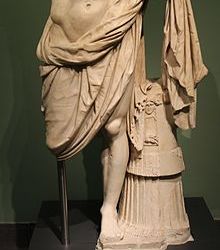
We see here, a man with a veristic head and an idealized body. The head is obviously meant to convey the meaning above, but the body is of a much younger man; it’s meant to convey strength and heroism. So, the entire sculpture together paints the picture of a man with the experience and constraint of an older patrician man, but the strength of a hero.
Portraits of women from this period would also be done in the veristic style, but not as intensely as their male counterparts. You can still see the agedness of this woman, and her distant expression of self-control, and dignity, but her wrinkles are not as deep and defined; she’s not meant to be as worldly as a man.
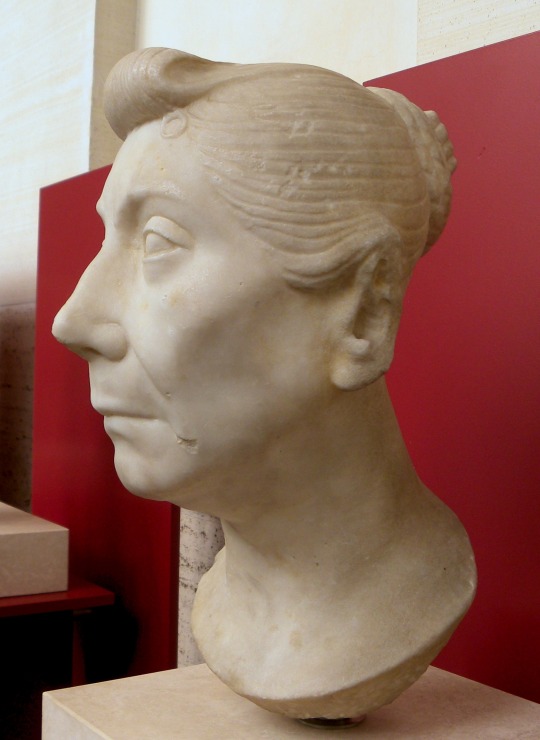
Some portraits will have individual elements mixed in with the verism. Take a look at Pompey, for instance.

He’s still keeping somewhat to the veristic style; you see from the wrinkles on his forehead and his mouth that he’s clearly meant to be seen as an older man, but his huge nose, round face and small eyes are personal traits that he really had- you see a statue from this period of time in Rome and you see that nose, there is no doubt that it’s depicting Pompey- but there’s also more to this portrait.
This is where we see some idealization start to slip back in. Take note of the hair; it’s reminiscent of Alexander the Great’s “Lion’s mane” that he’s pretty well-known for having. Pompey is choosing to depict himself with traits from Alexander, drawing a physical connection between himself and the great leader; embodying these traits and claiming them as his own, basically. He wants the viewer to associate him with Alexander the Great.
You’ll continue to see this with Caesar as well, the veristic style, but also the idealization. The idealization being him having a full head of hair, as he was reported to, uh, be balding, at least.
When we get to Augustus, he does away with verism entirely and fully embraces the classical Greek style of sculpture. He does this because he wants to connect his reign to that period of time in Greece; so right off the bat he’s making connections to legitimize himself.
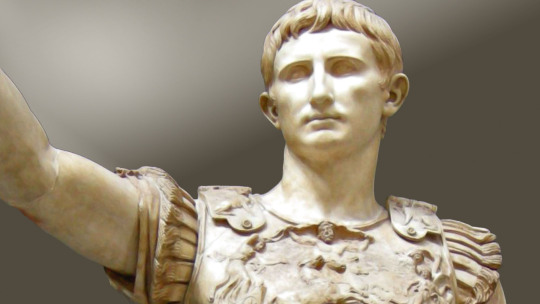
Augustus’ portraits and architectural works are rife with propaganda, so that’s an entirely different beast that we don’t have time to go into, so we’ll just stick with busts and statues.
The first thing to mention about Augustus’ portraits is that he never ages. He died in his seventies, but he became emperor young, so his portraiture kept up the appearance of him as a younger man; this is part of that classicizing style, specifically the depictions of Greek deities, whom were shown to be eternally youthful. It obviously draws inspiration from Greece, as stated, but it also meant to convey his “godly heritage” due to his descension from Caesar, who was also “descended” from Venus. You can also usually tell when a statue of Augustus was made if you look at the feet. If he’s wearing sandals, it was made while he was still living, but if he’s barefoot, then that probably means it was after he died and was defied.
His skin is smooth, he has simple, sharp features which came to be associated with the julio-claudian line. These probably are not his true features- that idealization again- but the thing that identifies his statues the most is that lock of hair that looks like a crab claw. Remember that crab-claw. It will be back later.
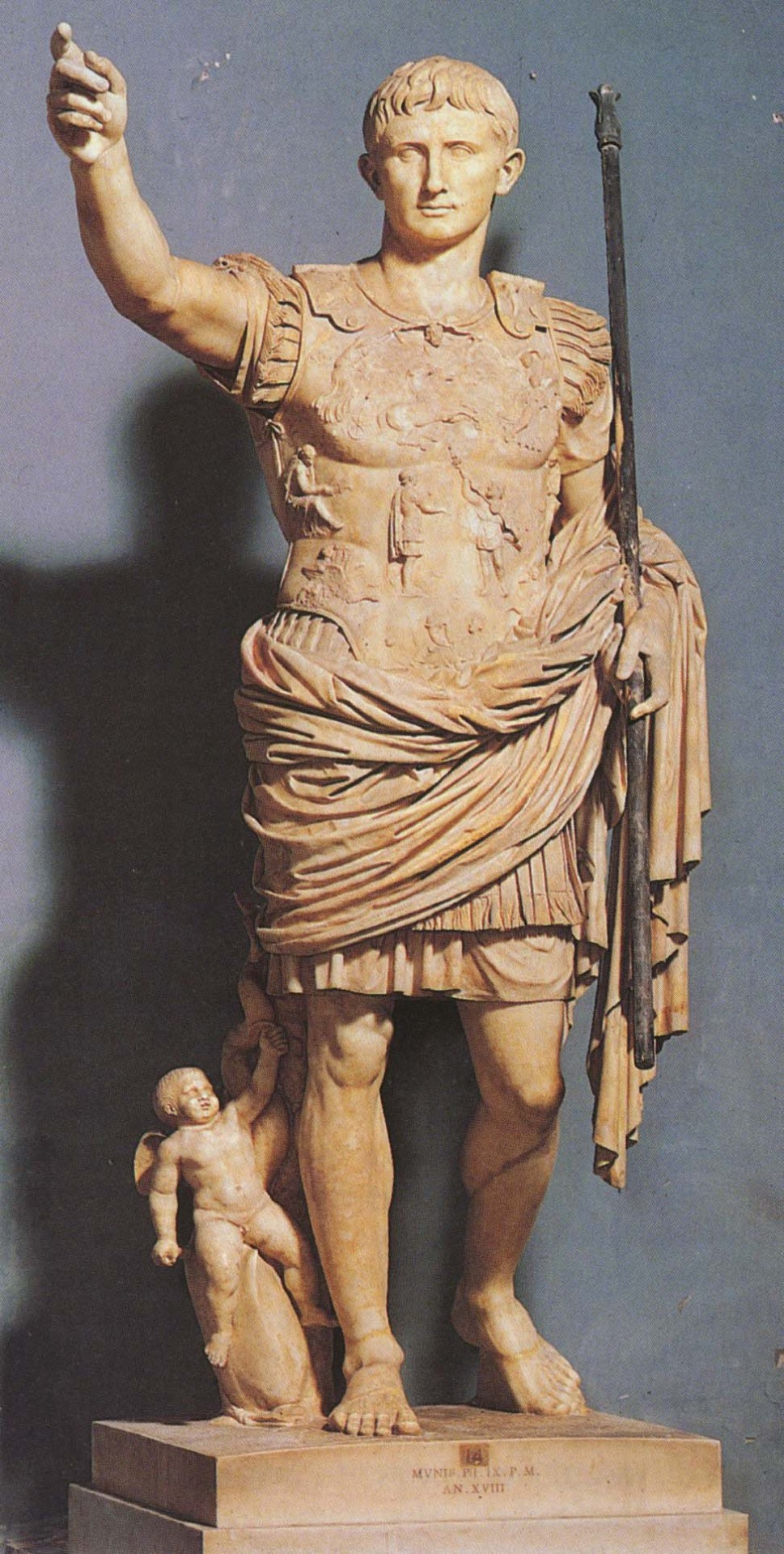
A lot of his full body sculptures will include these little hints and nods to his heritage, as well as his various accomplishments and inclusions of other deities. These are promises for his reign. You see Tellus a lot, she was the goddess of the Earth, and Augustus used her image a lot to convey the bounty and peace he wanted associated with his reign.
As an aside: These statues were mainly meant as stand-ins for the emperors in question, as a lot of events needed the emperor to be physically present to do, so these statues and busts would be created en-masse and placed in different places so the emperor could technically be present.
Okay, back to it.
Remember those facial features Augustus generally depicted himself with? You should, because they’re gonna keep popping up for awhile.
Throughout the rest of the Julio-Claudian dynasty, every single emperor after Augustus will keep depicting themselves with these qualities. Tiberius, who ruled right after Augustus, did this as well, despite not even being related by blood to his predecessor.
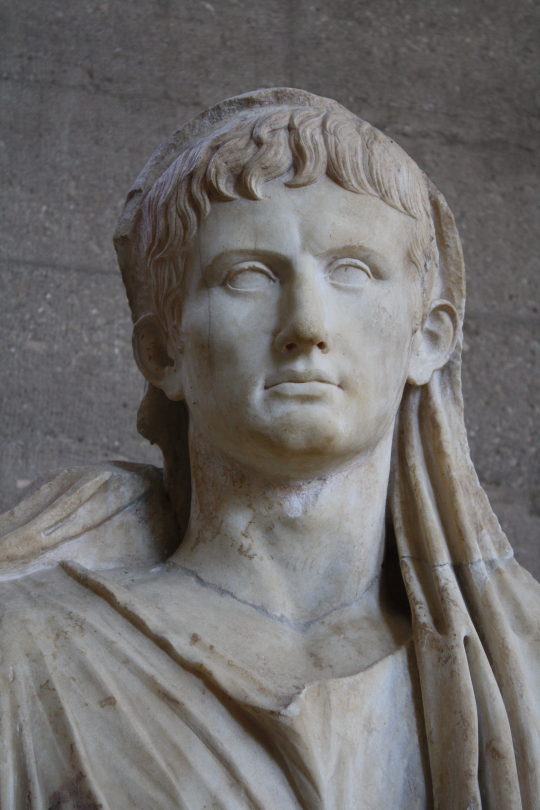
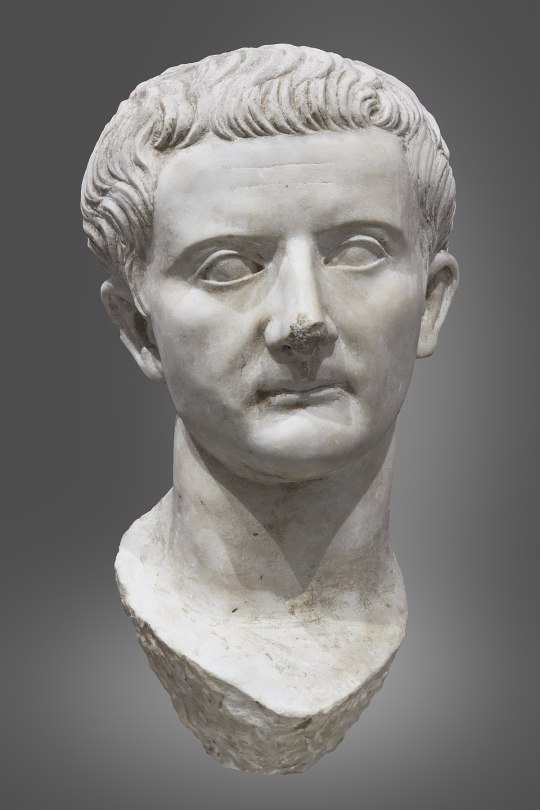
Tiberius on the right, Augustus on the left.
They’re doing what Pompey did with Alexander the Great in his portrait: depicting themselves with features associated with Augustus to draw a connection to him, essentially drawing power from his influence.
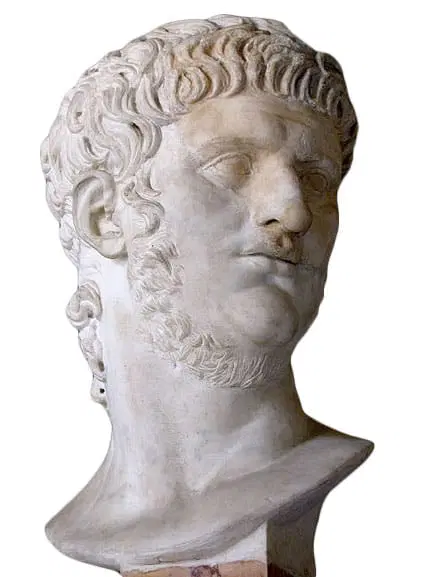
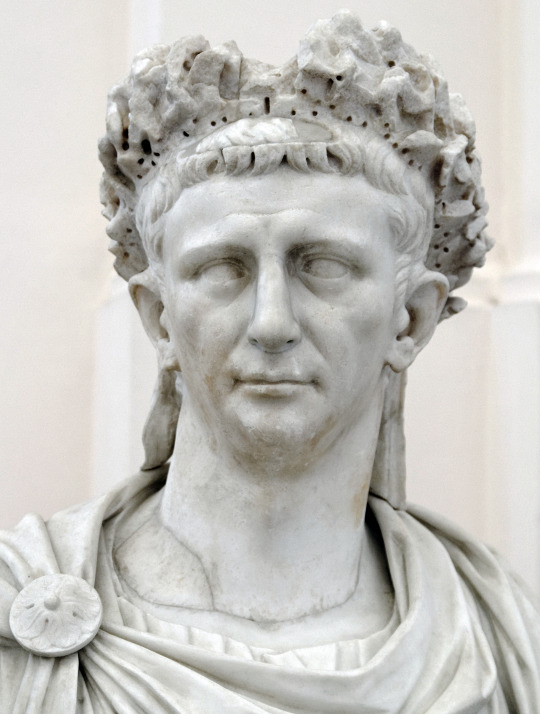

In order, Nero, Claudius, Caligula.
We see this pattern throughout the Julio-Claudian line in portraits of Caligula, Nero, Claudius as well, though Claudius is unique in the fact that, while still using those features, he also chooses to return to verism in his portraiture, partly because he was older when he ascended, but mostly due to the fact that he’s trying to shake off the immediate association with Caligula by appearing as his opposite.
We subvert a little bit when we get to that period between the Julio-Claudians and the Flavians, when there were 5 different emperors in one year (which seems like nothing when we get to the soldier-emperors later). It’s a little bit of a return to verism, to try and shake off the chaos that was Nero.
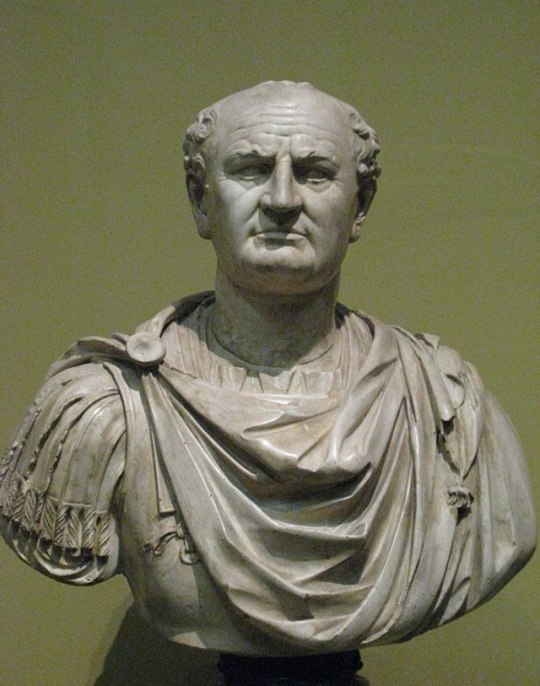
This is Vespasian, he was considered the “anti-Nero”.
You’ll probably notice by now that a lot of emperors depict themselves in certain ways also as a direct response to their predecessors, basically going like “hey, I’m not like that guy.”
With the Flavian Dynasty, we see a semi-return to verism, the men don’t look as idealized as they were, but the women would continue to appear in that more, ageless, idealized state.
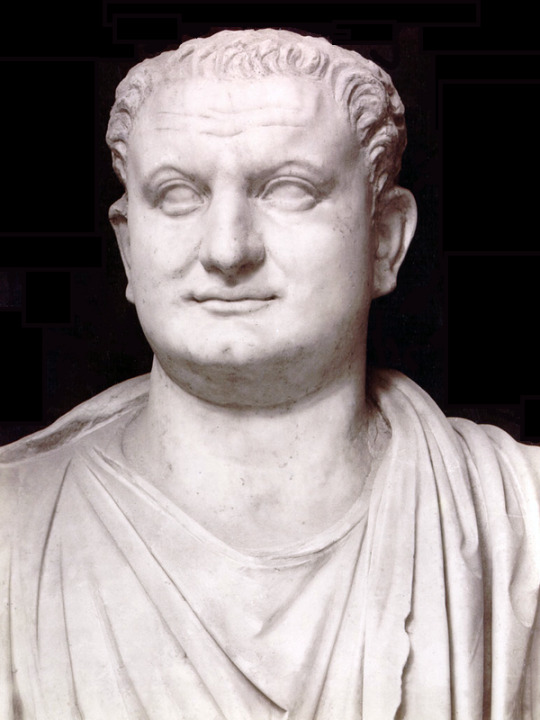
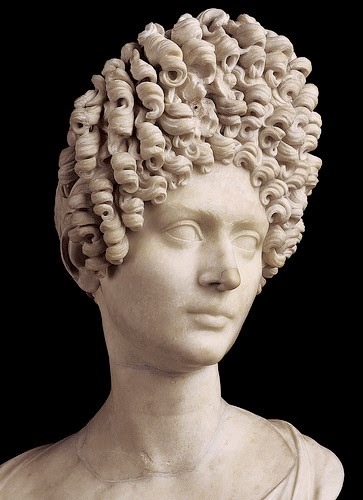
Hadrian comes along later and starts depicting himself with long hair and a beard. Hadrian loved Greek culture, so the hair and beard were meant to connect him with heroes and philosophers from that time, as well as to probably hide the facial blemishes he reportedly had.
The Antonine dynasty will be dominated by this “Hadrionatic look”, as well as still having that ageless, idealized look to (most of) them. We also see some head movement in these portraits, and the introduction of new, antonine features such as droopy eyelids, and arched brows.
Rinse and repeat, the emperors that followed with this dynasty will continue to use these features to connect themselves with each other, particularly Marcus Aurelius, whom you’ll see his features repeated with Lucius Veras, and Commodus. Commodus also drew inspiration from Hercules to imbue his image with heroic qualities.
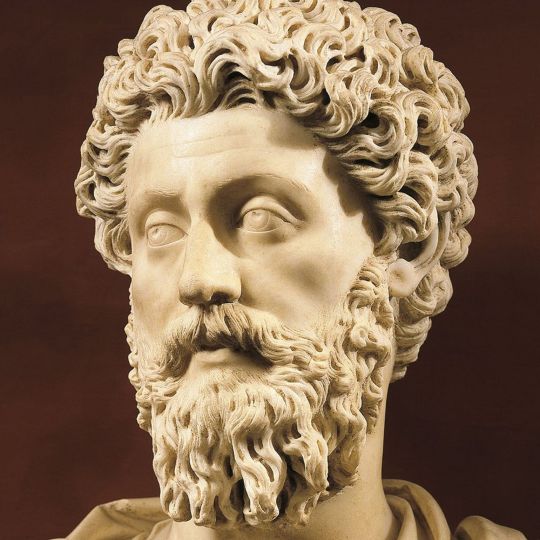
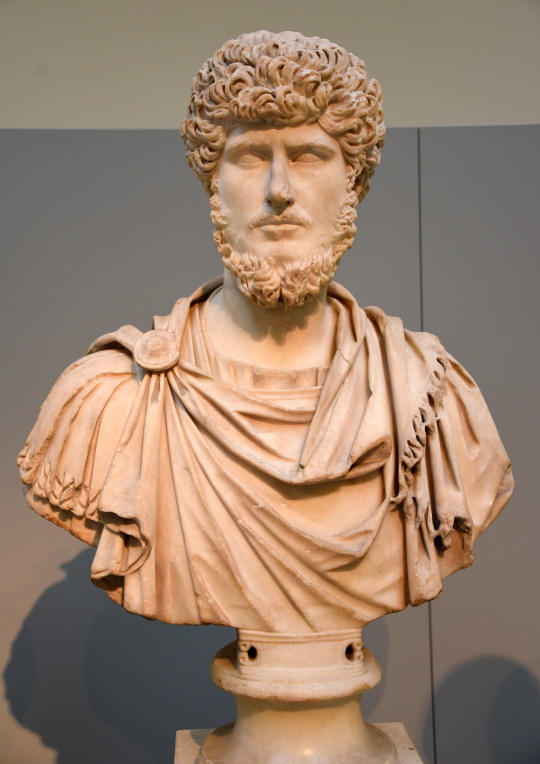

From left to right, Marcus Aurelius, Lucius Veras, Commodus
Looks nothing like the Commodus from Gladiator.
This continues up until Septimius Severus, then gets flipped on its head when Caracalla happens.
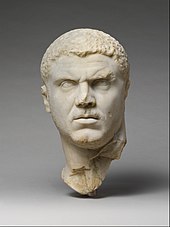
His portraits are very militaristic in style, and vastly different from what we’ve been seeing. Short cropped hair and beard; he is also very distant from the viewer. Pretty much all portraiture up until this point engaged the viewer head on, but Caracalla’s neck is dramatically turned, his eyes staring up at the ceiling. He looks very cruel and suspicious, like he does not want you there. Fitting, He did kill his own brother so he could have sole rule. This is the most personality we see in a roman portrait, ever.
This high expressionism will continue for a while with the soldier emperors: this was a period of 49 years where 25 different emperors reigned. We don’t have portraits of many of them, aside from some coins, cause most of them didn’t live long enough to get to that point.
Most of this emotionalism is fueled by the rise in neoplatonic philosophy, which placed favor on emotions rather than physical characteristics.
Also, throughout this time we’ll see quite a bit of back and forth, a lot of “I’m not that guy” because soldier emperor portraits generally had 2 modes: either the more emotional Caracalla-esque appearances, or a return to classicism to evoke the feeling of Augustus’ glory age. These were usually used in direct response to the other.
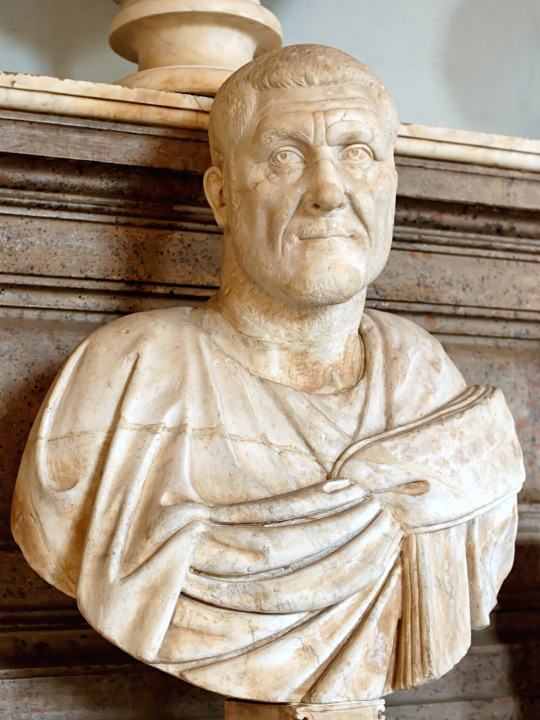

Maximinus Thrax: Mode 1 Gallienus: Mode 2
When we finally reach the Tetrarchy, we are in complete abstractism. There are no more personality defining features, and it’s virtually impossible to tell who is who. Their faces are simplified, the only difference is that some have facial hair, and some are clean shaven; and this is only to identify who is the Augustus and who is the Caesar. We still see the eyes turned away from the viewer, keeping that distance between emperor and citizen. This is purposeful, it’s meant to convey the message that the individual is not important, the position is. All the figures look the same because they’re all ruling as one unit.
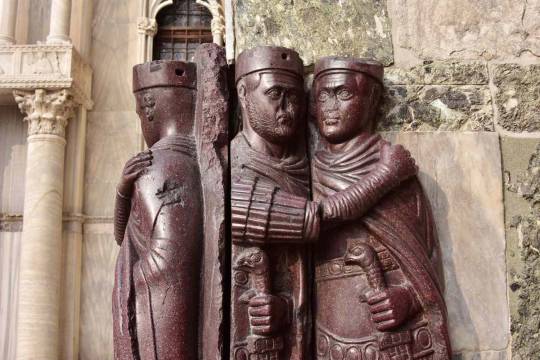
This abstraction is seen in Constantine’s portraits as well, the simplified face, the large eyes, the distant expression, but we see the hair has a little bit of detail, the comma-like look of Trajan, as well as the clean-shaven, youthful appearance of Augustus. Constantine, like so many before him, is drawing connections between himself and these past rulers, making a promise that his reign will be just as successful.

TLDR: None of these portraits reflect what these people actually looked like. They reflected values and traits that they wished to convey to the populace to instill a certain image about themselves and their subsequent reigns. They would even draw influence from past emperors and historical figures to convey the message about themselves that they wanted to convey.
#posts from the void#rome#ancient rome#I did this instead of working on the actual final paper I have to write for this class
60 notes
·
View notes
Text
Books I read this year and quick thoughts about them cause last year when I did this I had fun remembering them.
Under the cut cause there are a bit too many.
~
Ratings are 100% subjective. Going by order I've read them, not rank or whatever. I'd generally rec everything above 3 stars.
~
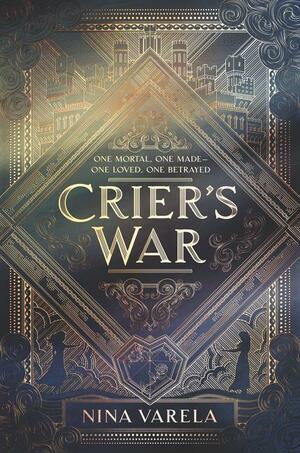
Crier's War by Nina Varela
What if you were a human, the slave race under the ruling androids and you wanted to kill the "daughter" of the lord of your city, but she was actually nice. Gay and technically enemies to lovers..? Though only the human wants to kill the other. Just a pretty nice, enjoyable fantasy. 3/5
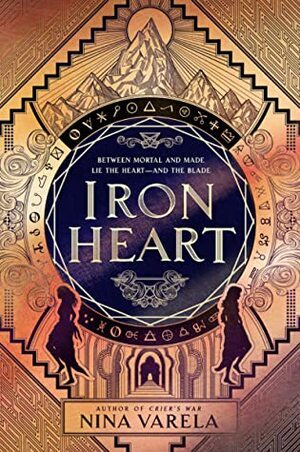
Iron Heart by Nina Varela
Sequel to Crier's War. Here it becomes less conflict between the main characters and more world-wide troubles. Consisted quality with the first book and it also has a scene where the main characters decide to pretend to be wives to trick their way into a mansion. Hilarity ensues, which was a great break from the world-wide conflict. 3/5

A Room of One's Own by Virginia Woolf
No notes needed, I think. As of writing this, this is the best essay I've ever read. Even though you can see its age at some points, I feel it's still very relevant. 4/5
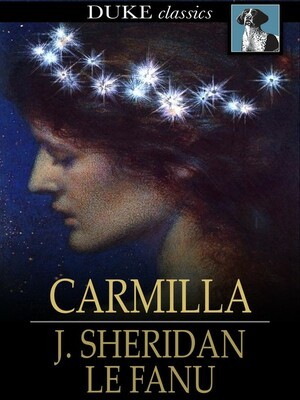
Carmilla by J. Sheridan Le Fanu
In a remote mansion, a father and a daughter take on a sickly woman. At points it felt like I was reading a lesbian romance. Which is wild considering this is written by a man in the 19th century. Absolutely horrid ending. 2.75/5

Carmilla and Laura by SD Simper
What Carmilla could and should had been. Same premise, much, much better ending. 3.75/5
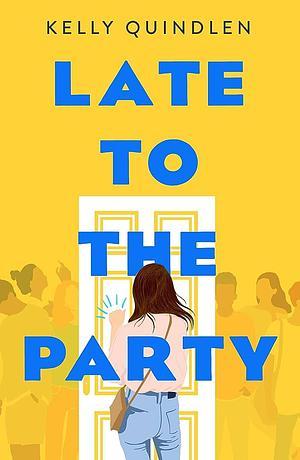
Late to the Party by Kelly Quindlen
Quindlen has this uncanny skill that makes me feel and almost miss teen years I never had or would I have (cause all her works are set in the US). This particular book was a very... I think good portrayal of not fitting in, and what you might be willing to do and sacrifice to do so. And then the growth that (hopefully) comes through such experiences. 4/5
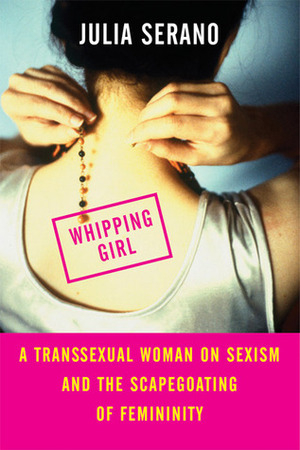
Whipping Girl by Julia Serano
Not much to say. The description, twice, promised arguments that included her knowledge of biology. That wasn't the case. A fine book to read, but the rating I gave it reflects my annoyance with that description and its setting of wrong expectations. Pay more attention to the title in this one. 3/5
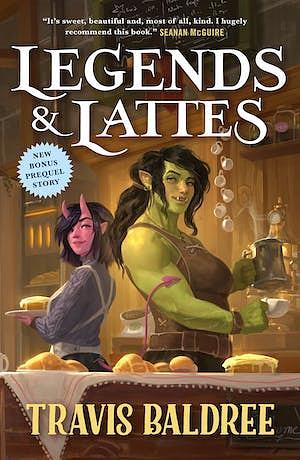
Legends & Lattes by Travis Baldree
Top tier vibes. An orc adventurer settles down and makes a coffee shop in a town that doesn't know what coffee is. Did not vibe with the climax or the romance (that felt shoehorned in) but overall a very enjoyable read. 3.5/5
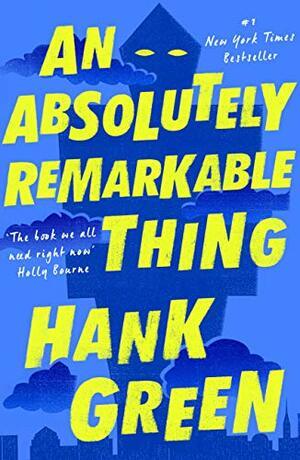
An Absolutely Remarkable Thing by Hank Green
Giant alien sculptures appear all around the globe, and the world tries to understand what they are. The main character is one of the first that finds them. One of the most interesting premises I've read. And a very interesting book right up until the ending, which I really, really didn't like. Maybe book two fixes my problems with it, but it was too sudden and I was not in a good place to give it a try then. The rating might be too harsh, but it is what I felt right after finishing it. 2.75/5

A Spindle Splintered by Alix E. Harrow
A pretty cool retelling of the Sleeping Beauty. A very hopeful book, even if the main character starts it by celebrating their last birthday. 3/5

The Ones Who Walk Away from Omelas by Ursula K. Le Guin
I still think about this story sometimes. Absolutely insane how Le Quin managed to write something this short and this good. I found out more about myself from this story. I know me better through thinking about this story. It's just amazing, read it and think on it. 4/5

Short Stuff by Kate Fierro, Alysia Constantine, Jude Sierra, Julia Ember, Jen Sternick, Tom Wilinsky
A short LGBTQ+ stories collection. I was in a really bad place at the time of reading it, I barely remember anything. Though I do remember that some were really good though, while others were... pretty meh to even just... bad. Overall 3/5.

Elysium Girls by Kate Pentecost
Praise be the dystopia that got me out of my reading slump! Really cool concept, I loved it. The magic and technology is also very well made. 3.25/5
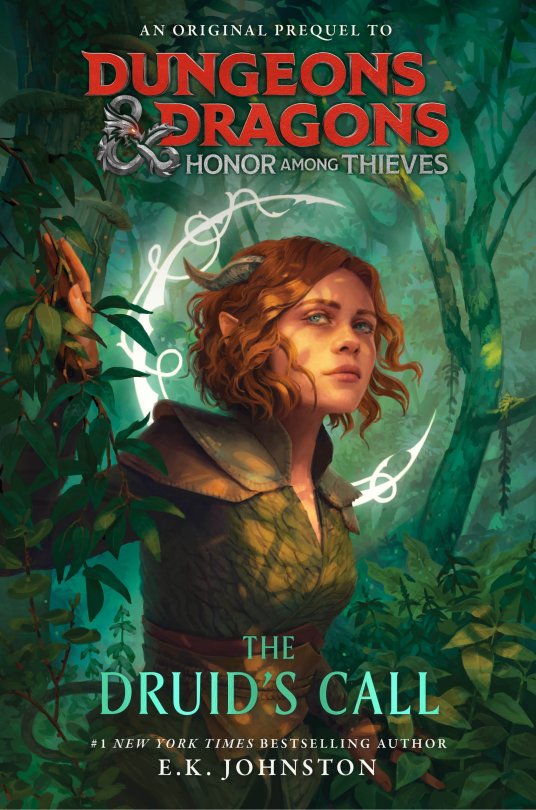
The Druid's Call by E. K. Johnston
A book made to accompany the movie D&D: Honor Among Thieves and to expand on Doric's character. It's basically her whole backstory leading up to the movie events. I think there's nothing to say here, right? There is? Okay. I've watched, listened, read and played through maybe too many stories. Seen thousands upon thousands of characters. No one ever came close to how much I relate to Doric and her story. This book is the most accurate description of abandonment and trust issues I've ever read. It was also aware how something like that might heal, and how blind you might seem (or be) when carrying such baggage. Again, my thoughts are very subjective and biased, but this is one of the best books I've ever read. 5/5

The Fellowship of the Ring by J. R. R. Tolkien
I'm not writing a description for this. You know what it is. Dense writing and worldbuilding, but it so happens that I'm into that. :P 3.5/5
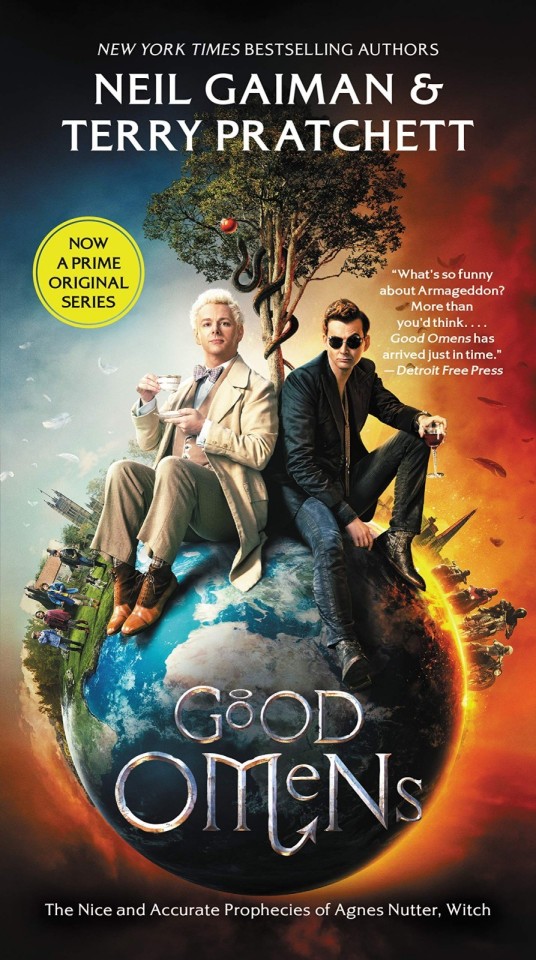
Good Omens: The Nice and Accurate Prophecies of Agnes Nutter, Witch by Terry Pratchett & Neil Gaiman
Not writing a description for this either. You're reading this on Tumblr, therefore you know the show. :P Some parts are better than the show, some are not. The kids' characters are much more well developed here, I think. Same with the Witch. Worth reading if you've seen the show, worth if you haven't. 3.5/5

A Different Kind of Us by Kelly Quindlen
At her first job, the main character finds out that her ex-best friend and first love works there as well. A fun, sad and more adult take on the type or stories Quindlen tends to write. A nice change to see adults struggle and work towards coming to terms with themselves and their relationships. 4/5 (Quindlen is one of my fav authors, I'm biased, shut up)

Six of Crows by Leigh Bardugo
A deadly heist, attempted by a skilled band of thieves and thugs that you will end up loving (the vast majority of them anyways). It had been a while since I've read YA fantasy before reading this, and it was a bit surreal feeling like a 15yo again. The book itself is really interesting, but the characters are not 16yo, I'm sorry. Still, they are really, really cool in their own unique ways. The magic system is a really good one as well. 3.5/5

Crooked Kingdom by Leigh Bardugo
Sequel to Six of Crows. Great book and a damn good ending. I would kill for Inej and Jesper. 3.75/5
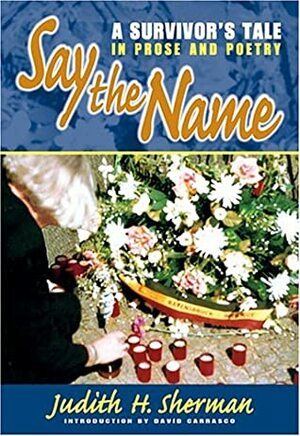
Say the Name: A Survivor's Tale in Prose and Poetry by Judith H. Sherman
This is a book that I believe everyone should read. It's not a fun or light read, but I think it should be in everyone's library. It describes the experiences of a 14yo Jewish girl (the author at the time) who was imprisoned in the Ravensbruck Concentration Camp during World War II. No other book, movie or documentary about that part of history has hit me more than this book. I think that when we're just seeing numbers, it's so easy for our mind to numb out the horror each individual experienced. The way Say the Name focuses on a single experience gets you away from numbers and statistics, and the focus on one person was, to me, so much more impactful. Read it. 4/5

One Last Stop by Casey McQuiston
You meet a hot girl in your commute, but it turns out she's lost in time, stuck in the subway for eternity. What do you do? An absolute joy of a book. Main and side characters were all fantastic. It's a great story and top tier romance. One of the few books I loved so much that I went out of my way to grab a physical copy. It's better read while on the train by the way. It truly enhances the experience. 4.5/5
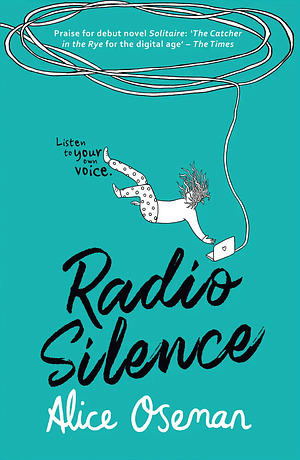
Radio Silence by Alice Oseman
Big themes of following expectations (your own and others) and depression. Not an easy read, and I think it would touch some people more than others. 3.5/5
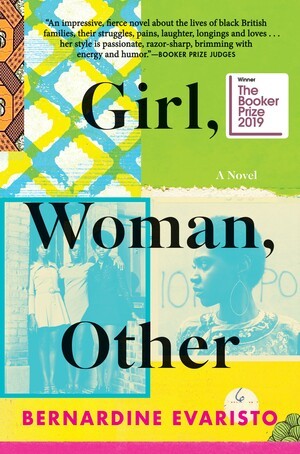
Girl, Woman, Other by Bernardine Evaristo
A big cast, and many different stories that are all interconnected through various means. I think this is another book that should be read by everyone. 4/5

Love Beyond Body, Space & Time by Hope Nicholson with David A. Robertson, Cherie Dimaline, Gwen Benaway, Richard Van Camp, Mari Kurisato, Nathan Adler, Daniel Heath Justice, Darcie Little Badger, Cleo Keahna, Grace L. Dillon, Niigaanwewidam James Sinclair
Another short stories collection. Some are amazing, some are meh and some I would had loved if they were more lengthy. A lovely collection overall. 3.25/5
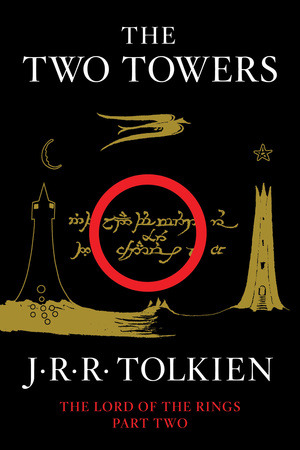
The Two Towers by J. R. R. Tolkien
Started great, then kinda slowed down to a point that even though I thought I like his writing style, it became quite tiring to get through. Still a really good book. 3.25/5
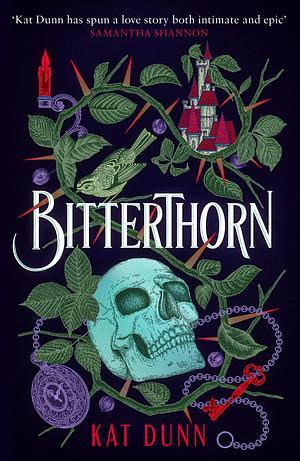
Bitterthorn by Kat Dunn
A Witch haunts a city, taking a young man every generation or so. Our protagonist is the daughter of the current duke, and in deep depression. So when the Witch comes for her toll once more, she volunteers instead. Very atmospheric. But I think what won me over, is the characters and their interactions. There's this thing in fiction, where you make two characters have a fight, but they reconcile because they each can see the error of their ways and are willing to swallow their pride cause they care for each other. That is a "trope" that I will eat up every single time, and it is done greatly here. 4.25/5
~
And now I haven't touched a book for over a month... Here's hoping that I'll start reading again by January. :P
~
#book recs#books#personal#long post#been writing this on and off for a while in the drafts#and since i don't think i'll finish anything else by the end of the year#might as well post it#mmhm
5 notes
·
View notes
Text
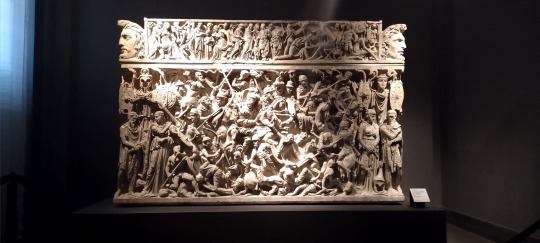
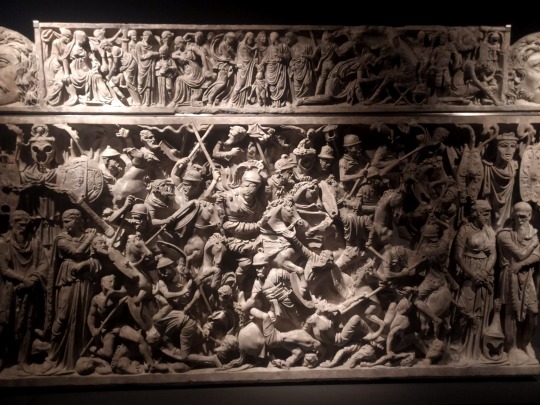

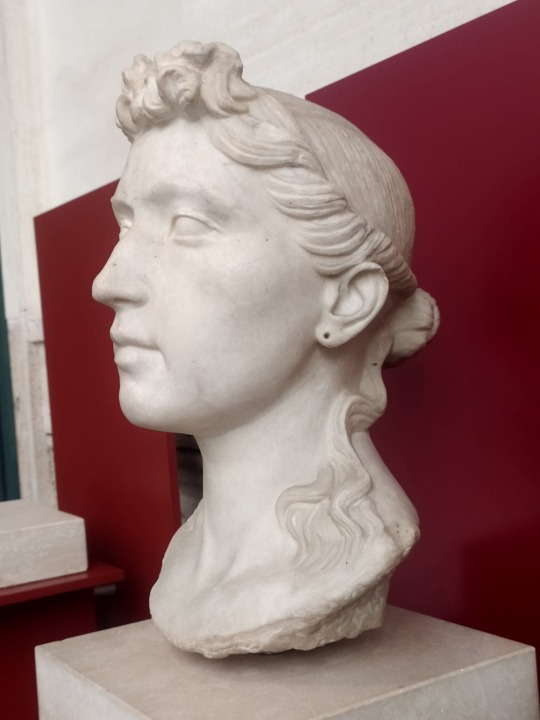
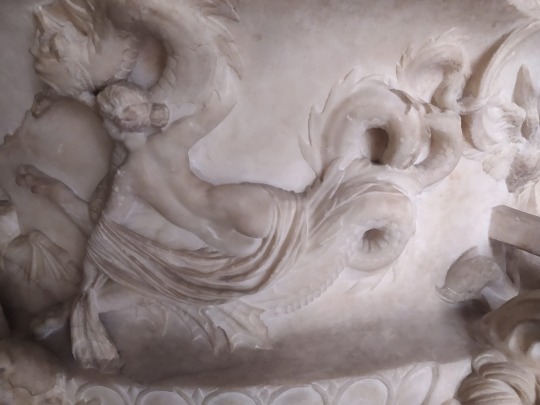
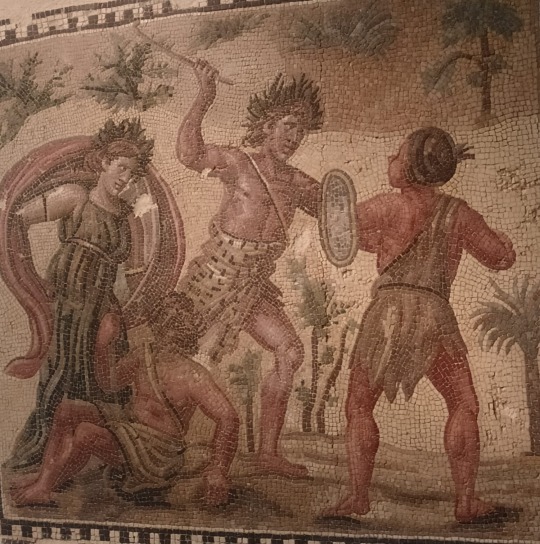

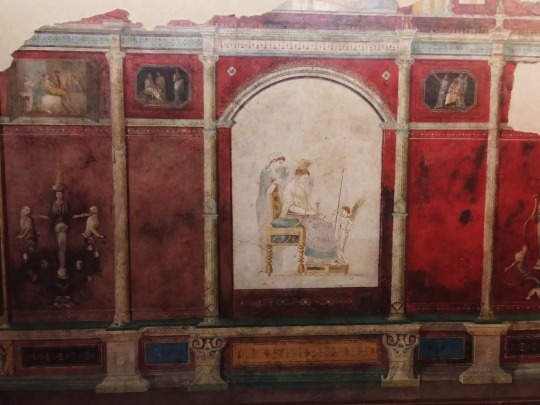
Palazzo Massimo - Rome Inspired by the magnificent palaces of the 16th century, Palazzo Massimo was built between 1883 and 1887 by the Jesuit priest Massimiliano Massimo, based on a design by Camillo Pistrucci, to house the new Jesuit school. In 1981, the Palazzo was acquired by the Italian Government to become one of the new sites for the National Roman Museum. A radical renovation of the building was entrusted to Costantino Dardi and the Palazzo opened to the public in 1998. Since then, the original installation has been revised and adjusted on a number of occasions, interweaving the various threads of the exhibition using a design based on chronology and theme. By referring to the contexts in which the artefacts were found, this creates the suggestion that different works are jumbled together as in the bustling collections of the 16th century. Now, moving through the rooms of the Palazzo Massimo is like leafing through the pages of a wonderful book. Its four floors contain some of the greatest masterpieces of the entire artistic output of the Roman world: sculptures, reliefs, frescos, mosaics, stuccoes and sarcophagi, originating, like all of the treasures of the National Roman Museum, from excavations undertaken in Rome and the surrounding region from 1870 onwards. The route of the visit begins with the theme of the portrait and its evolution, from exclusive use by the most illustrious citizens in the Archaic Period to the widespread use of portraits among freedmen, from portraits of Greek origin, such as those of Alexander the Great, to those of simple Roman citizens eager for self-celebration at the end of the Republic, like the Tivoli General, and new forms of portraiture linked to the birth of the Empire, such as Augustus dressed as the Pontifex Maximus. Greek originals in marble, such as the Niobid from the Horti Sallustiani (Gardens of Sallust), and in bronze, including the Boxer at Rest and the Hellenistic Prince from the Baths of Constantine, are typical examples of the models of Greek art that came to Rome with the wars of conquest. Continuing the history of portraits in the Imperial Age, the first floor displays the Roman taste for reworkings and copies of ideal sculptures, like the Discobolus of Myron, presented in two well-known reproductions – the Lancellotti Discobolus and the Discobolus of Castel Porziano -, the Sleeping Hermaphroditus, the Aphrodite of Menophantos, and innumerable works depicting gods and mythological figures. However, sculpture also became a means of expression for celebrating victories at the borders of the Empire, such as the monumental Portonaccio sarcophagus, and a method for paying tribute to the greatness of well-known figures in the society of the late Roman Empire, as can be seen from the Acilia and Annona Sarcophagi. The second floor of the Palazzo is dedicated entirely to frescos, stuccoes and mosaics. One element that is fundamental in fully grasping the taste and aesthetic sense of the Roman aristocracy is the superb wall decorations of major archaeological complexes, such as the Villa di Livia in Prima Porta, the Villa Farnesina in Trastevere and the Villa di Termini. The basement level offers a selection from the collections from the National Roman Museum’s Coin and Medal Collection and is dedicated to the economy and the use of money, interpreted through an exhibition of coins, jewellery, precious ornaments and documents relating to the daily cost of life.
#rome#roma#italy#italia#travel#ig#art#photography#love#igersroma#picoftheday#romeitaly#photooftheday#instagood#architecture#travelphotography#lazio#europe#visitrome#igersitalia#paris#history#photo#like#vatican#travelgram#london#instagram#follow#italian
3 notes
·
View notes
Photo

PL:
Zespół pałacowo-parkowy Radziwiłłów w Białej Podlaskiej (część 2 z 2)
Brama wjazdowa
Wybudowana z piaskowca, barokowa brama stanowiła główne wejście na teren rezydencji. Wzniesiona w latach 1699-1702, prawdopodobnie przez architekta Józefata Jeziornickiego, wzorowana na łuku tryumfalnym Konstantyna Wielkiego w Rzymie, była wizytówką całego zespołu pałacowego. Ma ona bogaty wystrój rzeźbiarski o charakterze triumfalno – wojennym.
Wieża bramna
Wieża to barokowy budynek, wzniesiony przez Józefata Jeziornickiego w latach 1699-1701, rzutowany na planie kwadratu, ujęty od dołu piętrową zabudową. Składa się z pięciu kondygnacji. Zwieńczony jest barokowym hełmem na gloriecie. Naroża wieży zdobią dwie równolegle biegnące obok siebie lizeny. Na wieży od strony pałacu umieszczony był zegar. W przeszłości wieża bramna pełniła funkcję strażnicy i więzienia.
Szyja
Wzniesiona w latach 1699-1701 i odbudowana w latach 20-tych XX wieku, łączy bramę wjazdową z wieżą bramną. Jest to budynek murowany z cegły i otynkowany, na planie ćwierć koła, nakryty dachem dwuspadowym. W przeszłości pełnił on funkcję łącznika komunikacyjnego pomiędzy bramą główną a wieżą, przez którą prowadził wjazd na dziedziniec. Przejazd przez ciemny tunel szyi i widok umieszczonego u jej wylotu budynku pałacu wzbudzał respekt przed potęgą rodu Radziwiłłów.
EN:
The Radziwiłł palace and park complex in Biała Podlaska (part 2 of 2)
Entry gate
The Baroque gate, built of sandstone, was the main entrance to the residence. Built in the years 1699-1702, probably by the architect Józefat Jeziornicki, modeled on the triumphal arch of Constantine the Great in Rome, it was the showcase of the entire palace complex. It has a rich sculptural decoration of a triumphal and military character.
Gate tower
The tower is a Baroque building, erected by Józefat Jeziornicki in the years 1699-1701, projected on a square plan, framed from the bottom with two-storey buildings. It consists of five floors. It is topped with a Baroque helmet on a gloriette. The corners of the tower are decorated with two parallel pilaster strips running side by side. There was a clock on the tower from the side of the palace. In the past, the gate tower served as a guard and a prison.
Neck
Built in the years 1699-1701 and rebuilt in the 1920s, it connects the entrance gate with the gate tower. It is a brick and plastered building, on a quarter-circle plan, covered with a gable roof. In the past, it served as a communication link between the main gate and the tower through which the entrance to the courtyard led. Passing through the dark tunnel of the neck and seeing the palace building located at its exit aroused respect for the power of the Radziwiłł family.
#białapodlaska#biała podlaska#pałac#palace#museum#muzeum#wieża#tower#gate#brama#polska#poland#barok#baroque#palac#lubelskie#architektura#architecture#widok#krajobraz#landscape#budynek
2 notes
·
View notes
Text
Istanbul: A City of History, Culture, and Timeless Beauty
Istanbul, the vibrant metropolis that straddles two continents, is a city where history and modernity coexist harmoniously. With its rich past, stunning architecture, and diverse cultural influences, Istanbul is a destination that captivates visitors from all over the world. Whether you are drawn to its magnificent landmarks, bustling markets, or exquisite cuisine, this city offers an unforgettable experience.
A Glimpse into Istanbul’s History
Istanbul, formerly known as Byzantium and later Constantinople, has been at the crossroads of civilizations for over 2,500 years. Founded by the Greeks in the 7th century BCE, it later became the capital of the Roman, Byzantine, and Ottoman Empires. Each era left its mark on the city, shaping its unique cultural and architectural landscape.
In 330 CE, Emperor Constantine the Great declared the city the new capital of the Roman Empire, renaming it Constantinople. It flourished as a center of trade, culture, and religion, boasting architectural marvels like the Hagia Sophia. Following the Ottoman conquest in 1453, the city transformed yet again, blending Islamic and Byzantine influences to create a distinct Ottoman identity. Today, Istanbul continues to be a global hub, connecting East and West in an extraordinary way.
Iconic Landmarks and Attractions
Hagia Sophia
One of the most famous landmarks in Istanbul, Hagia Sophia, was originally built as a Byzantine church in the 6th century before being converted into a mosque by the Ottomans. Today, it stands as a symbol of the city’s rich history, showcasing breathtaking mosaics, intricate domes, and grand architectural designs.
Topkapi Palace
Once the residence of Ottoman sultans, Topkapi Palace is a must-visit destination. This sprawling complex features opulent rooms, lush gardens, and priceless artifacts, including the Prophet Muhammad’s relics and the famous Topkapi Dagger. The panoramic views of the Bosphorus from the palace are simply spectacular.
Blue Mosque (Sultan Ahmed Mosque)
With its striking blue tiles and impressive six minarets, the Blue Mosque is one of Istanbul’s most recognizable structures. Built in the early 17th century, it remains an active place of worship, welcoming visitors who wish to admire its stunning interior and peaceful atmosphere.
Basilica Cistern
Hidden beneath the city, the Basilica Cistern is an ancient underground reservoir dating back to the Byzantine era. Its dimly lit, columned hall, complete with Medusa head sculptures, creates an eerie yet fascinating ambiance, making it a favorite among tourists.
Grand Bazaar and Spice Market
For an authentic Istanbul shopping experience, the Grand Bazaar and the Spice Market are must-visit locations. The Grand Bazaar, one of the oldest and largest covered markets in the world, features thousands of shops selling everything from jewelry to carpets. The Spice Market, on the other hand, is a sensory delight, offering fragrant spices, Turkish delights, and traditional teas.
The Unique Charm of the Bosphorus
Istanbul’s Bosphorus Strait is one of its most defining features, dividing the city into its European and Asian sides. A cruise along the Bosphorus provides breathtaking views of historic mansions, Ottoman palaces, and picturesque villages. The Bosphorus Bridge, connecting the two continents, is a symbol of Istanbul’s unity and diversity.
A Culinary Paradise
Istanbul’s food scene is as diverse as its history. The city offers an array of delicious dishes that reflect its multicultural influences.
Traditional Turkish Dishes
Kebabs – From juicy Adana kebabs to flavorful döner, meat lovers will find plenty to savor.
Meze – Small plates of appetizers, including hummus, eggplant dips, and seafood delicacies, are perfect for sharing.
Baklava – This rich, sweet pastry made with layers of filo, nuts, and honey syrup is a must-try.
Simit – Often referred to as the Turkish bagel, simit is a sesame-crusted bread that pairs wonderfully with tea.
Balık Ekmek – A popular street food, this fish sandwich is best enjoyed near the Galata Bridge.
Turkish Tea and Coffee Culture
No visit to Istanbul is complete without indulging in a cup of traditional Turkish tea or coffee. Tea is a staple of daily life, often served in tulip-shaped glasses, while Turkish coffee, with its strong and aromatic flavor, is an essential part of the city’s cultural heritage.
Istanbul’s Vibrant Nightlife and Entertainment
Istanbul offers a dynamic nightlife scene, ranging from rooftop bars with panoramic views to traditional Turkish music venues. The city’s nightlife hubs include:
Beyoğlu and Istiklal Street – Home to numerous bars, clubs, and live music venues.
Ortaköy – A scenic area by the Bosphorus, known for its stylish cafes and nightclubs.
Kadıköy – On the Asian side, this district offers a more laid-back yet lively nightlife experience.
For those interested in traditional performances, watching a Whirling Dervish ceremony or attending a Turkish folk dance show is a mesmerizing cultural experience.
Day Trips and Excursions
Princes’ Islands
A short ferry ride from the city, the Princes’ Islands offer a peaceful retreat from Istanbul’s hustle and bustle. Büyükada, the largest of the islands, is known for its charming streets, horse-drawn carriages, and stunning seaside views.
Çamlıca Hill
For breathtaking panoramic views of Istanbul, a visit to Çamlıca Hill is highly recommended. Located on the Asian side, this hill provides an excellent vantage point to admire the city’s skyline and the Bosphorus.
Süleymaniye Mosque
Often overlooked, the Süleymaniye Mosque is one of Istanbul’s most impressive mosques, offering a serene ambiance and spectacular views of the Golden Horn.
Why You Should Visit Istanbul
Istanbul is a city that never ceases to amaze. Its seamless blend of ancient traditions and modern innovations makes it a truly unique destination. Whether you are exploring its historic landmarks, savoring its culinary delights, or simply taking in the breathtaking views, Istanbul has something to offer every traveler.
With its rich cultural heritage, welcoming people, and vibrant energy, Istanbul is more than just a city—it is an experience that lingers in the hearts of those who visit. So, if you’re planning your next adventure, make sure Istanbul is at the top of your list!
0 notes
Text

Princess X is a sculpture by the artist Constantin Brâncuși depicting the Princess Marie Bonaparte, a psychoanalyst in her own right and great supporter of Freud. An initial version in marble is now in the Sheldon Memorial Art Galleries at the University of Nebraska.
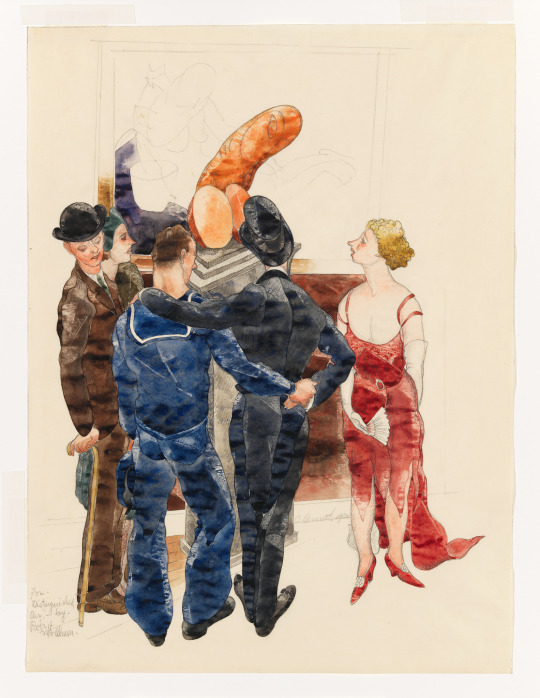
Distinguished Air (1930) watercolor by Charles Demuth This watercolor by Charles Demuth is based on a short story by Robert McAlmon, set in the decadent, sex and drugs-filled world of post-World War I Berlin. Demuth recasts a scene from the story, which took place in one of Berlin’s “queer cafes,” as the opening of an art exhibition where a provocative woman in evening dress, a male homosexual couple, and a heterosexual couple look at Constantin Brancusi’s famous sculpture, Princess X, (1915-16), whose overtly phallic form scandalized many contemporary viewers. The title “Distinguished Air” is derived from the narrator’s description of the protagonist, a worldly but dissolute American. Here, the gentleman carrying a cane seems to gaze at the crotch of the sailor, obliquely mirroring the infatuation of McAlmon’s protagonist with a handsome soldier. In the 1930s, Demuth’s watercolors often contained themes of underground sexual freedom and licentiousness, subjects which likely had personal resonance for the artist as a homosexual in a culture which was largely inhospitable. (Source: Whitney Museum of Art)
94 notes
·
View notes
Text
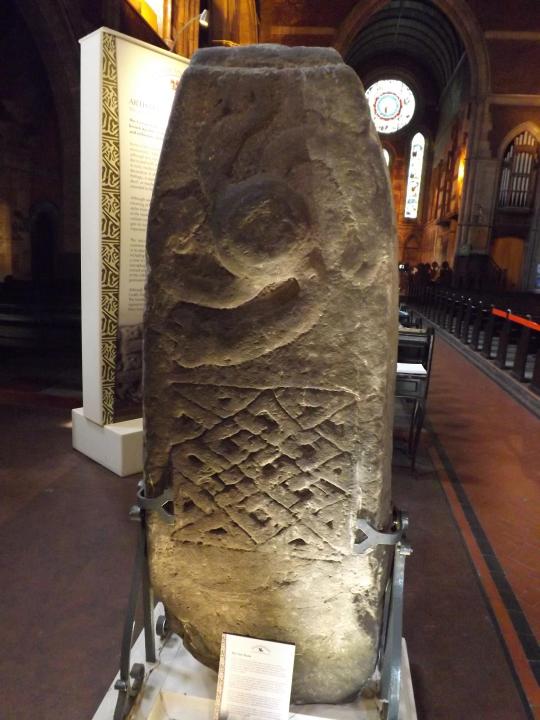

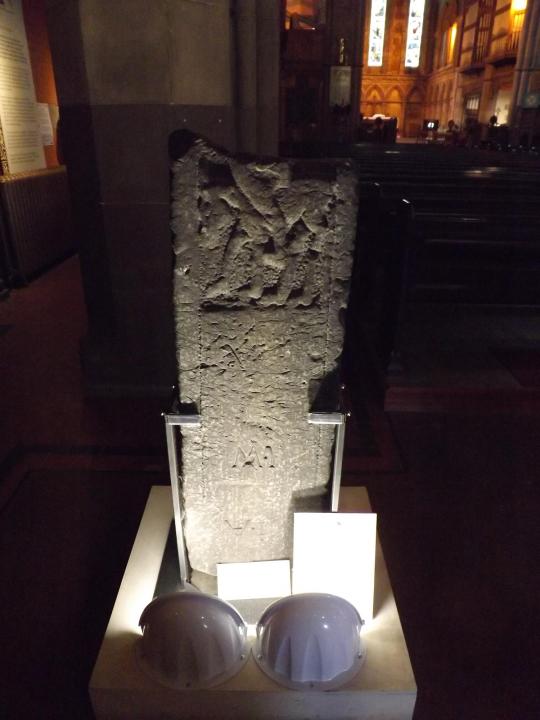







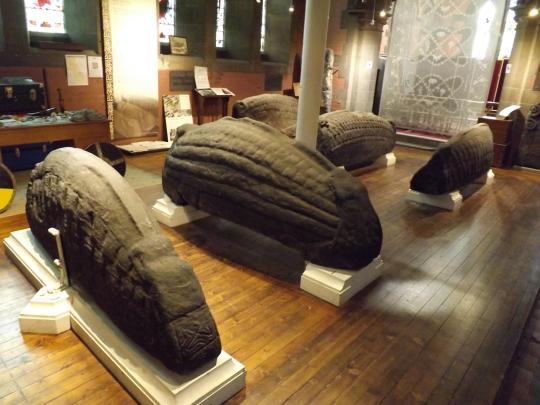
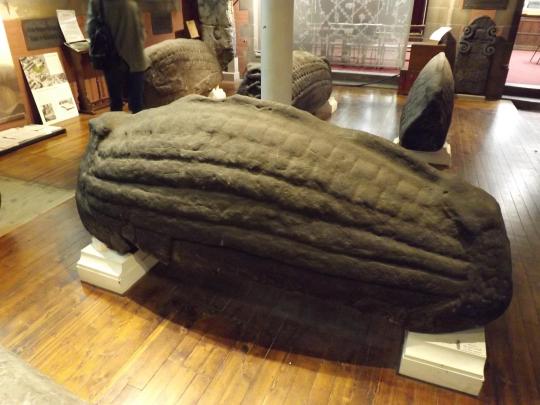

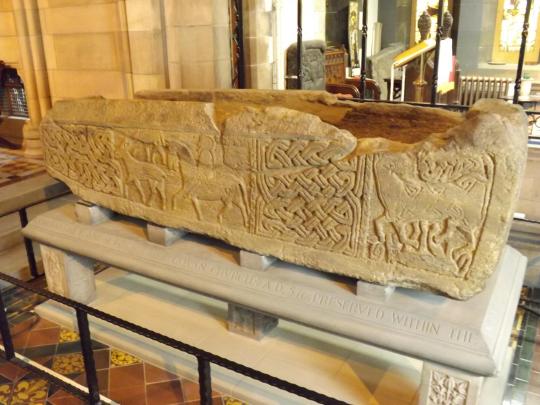
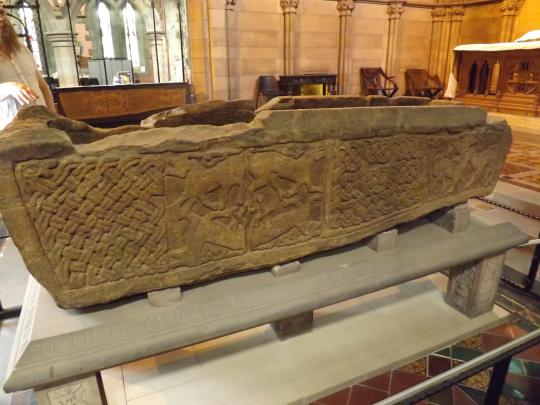

I was over in Glasgow on Friday night for a concert at Hampden Park (Pink's 'Summer Carnival' tour, for the record - it was astonishing, and I don't even usually like big stadium concerts); it ended pretty late at night, so I just stayed over and had a little while in the city the next day. One of the things I checked out was Govan Old Church a little way along the Clyde from the science centre, which isn't exactly a working church any more (a couple of local congregations use the space for services now and then, but it doesn't have a dedicated minister) but houses a great collection of mediaeval sculptured stones found in and around the old - and I mean really old - kirkyard, including several cross-slabs, some of which were reused as gravestones in later centuries, and five Viking-style hogbacks, collectively called the Govan Stones.
Despite the tag, they're not actually Pictish stones; they date from the Kingdom of Strathclyde, a separate Brittonic kingdom in what's now... well, still Strathclyde, but stretching down into Galloway and Cumbria as well, part of what the Welsh called yr Hen Ogledd, the Old North. However, the two kingdoms had a definite influence on each other - as well as the usual trade and conflict between neighbours, King Rhun of Strathclyde was married to a sister of King Constantine of the Picts - and that clearly shows in the style of carving, such as the use of knotwork and the 'bloke on a horse' motif', so I'm happy enough tagging them as such for organisational purposes.
1 note
·
View note
Text
When the equestrian statue of Marcus Aurelius-grnerally assumed to represent the first Christian emperor, Constantine, and duplicated in countless Romanesque reliefs and even free-standing monuments-occasionally recurs in a twelfth-century mural, contemporary sculpture can be shown to have served as an intermediary between the painting and the Roman original; it was in the workshop of a great sculptor-goldsmith, Nicolas of Verdun, and not until about 1180, that the rippling and clinging drapery style characteristic of so much classical sculpture from the Parthenon down to Imperial Rome was first transplanted to a two-dimensional medium, enamel; and it was through the influence of the statuary of Paris, Chartres and Reims, and after another thirty or forty years, that it took roots in painting, book illumination and stained glass.
0 notes
Text

The massive, 13-meter (yard) replica of the statue roman emperor Constantine unveiled in rome, tuesday, 6 february 2024. Credit: ap photo.
If a first- or second-century Roman emperor had commissioned a statue of himself half the size of Constantine's, and in that demigod-like pose, he would have been murdered before they even started carving the toes. Anyone who knows anything about what things were like during the Principate, created by the first emperor, Augustus, knows what I'm talking about. The third emperor, Gaius Julius Caesar Germanicus ("Caligula"), was assassinated for trying to change the ambiguous system in which the emperor was to behave as a kind of Consul for life. Nero attempted the same thing and died, in my opinion, under mysterious circumstances. Domitian did something similar and was assassinated. But Constantine was the emperor of the period known as the Dominate (established by Diocletian), the era in which the Empire, with an emperor known as the Princeps, First among Equals or "The First Citizen", had come to an end. @ancientcharm

The reconstructed monumental statue depicting Roman emperor Constantine the Great in the garden of Villa Caffarelli, part of the Capitoline Museums. Photo: Stefano Costantino/SOPA Images/LightRocket via Getty Images. The sculpture was recreated from existing fragments and with modern modeling techniques.
32 notes
·
View notes
Text
On this day in Wikipedia: Monday, 8th April
Welcome, fáilte, välkommen, bun venit 🤗 What does @Wikipedia say about 8th April through the years 🏛️📜🗓️?

8th April 2022 🗓️ : Death - Mimi Reinhardt Mimi Reinhardt, Austrian Jewish secretary (b. 1915) "Mimi Reinhardt (born Carmen Koppel; known as Carmen Weitmann c. 1936–c. 1950; 15 January 1915 – 8 April 2022) was an Austrian Jewish secretary. She worked for Oskar Schindler and typed his list of Jewish workers to recruit for his factory...."
8th April 2019 🗓️ : Death - Josine Ianco-Starrels Josine Ianco-Starrels, Romanian-born American art curator (b. 1926) "Josine Ianco-Starrels (October 17, 1926 – April 8, 2019) was a Romanian-born American art curator who worked as a museum director in Los Angeles, California...."
8th April 2014 🗓️ : Event - Windows XP Windows XP reaches its standard End Of Life and is no longer supported. "Windows XP is a major release of Microsoft's Windows NT operating system. It was released to manufacturing on August 24, 2001, and later to retail on October 25, 2001. It is a direct upgrade to its predecessors, Windows 2000 for high-end and business users and Windows Me for home users, and is..."
8th April 1974 🗓️ : Birth - Chris Kyle Chris Kyle, American sniper and memoirist (d. 2013) "Christopher Scott Kyle (April 8, 1974 – February 2, 2013) was a United States Navy SEAL sniper. He served four tours in the Iraq War and was awarded several commendations for acts of heroism and meritorious service in combat. He had 160 confirmed kills and was awarded a Silver Star, three Bronze..."

Image by TSHA ~ in accordance with Title 17 U.S.C. Section 107.
8th April 1924 🗓️ : Event - Sharia Sharia courts are abolished in Turkey, as part of Atatürk's Reforms. "Sharia (; Arabic: شَرِيعَة, romanized: sharīʿah, IPA: [ʃaˈriːʕa]) is a body of religious law that forms a part of the Islamic tradition based on scriptures of Islam, particularly the Quran and hadith. In Arabic, the term sharīʿah refers to God's immutable divine law and this referencing is..."
8th April 1820 🗓️ : Event - Venus de Milo The Venus de Milo, an ancient Greek statue of a woman with its arms missing, was discovered on the island of Milos. "The Venus de Milo or Aphrodite of Melos is an ancient Greek marble sculpture that was created during the Hellenistic period. Its exact dating is uncertain, but the modern consensus places it in the 2nd century BC, perhaps between 160 and 110 BC. It was rediscovered in 1820 on the island of Milos,..."
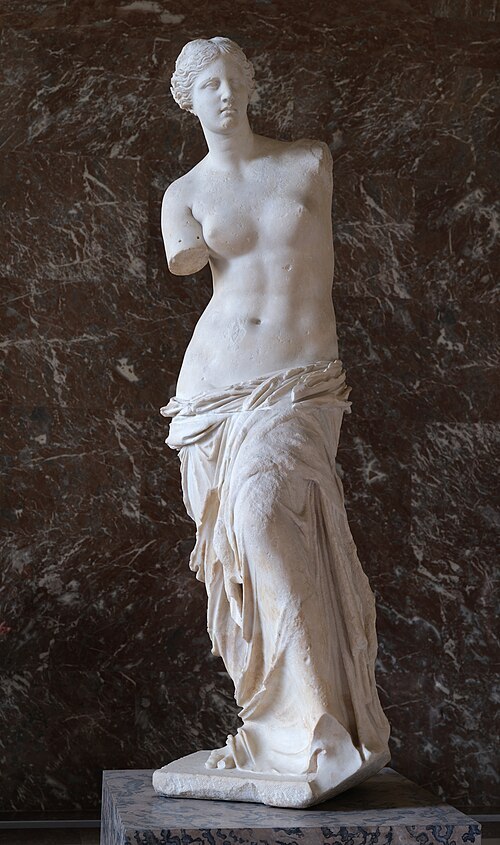
Image licensed under CC0? by Shonagon
8th April 🗓️ : Holiday - Christian feast day: Constantina "Flavia Valeria Constantina (also sometimes called Constantia and Constantiana; Greek: Κωνσταντίνα; b. after 307/before 317 – d. 354), later known as Saint Constance, was the eldest daughter of Roman emperor Constantine the Great and his second wife Fausta, daughter of Emperor Maximian. Constantina..."
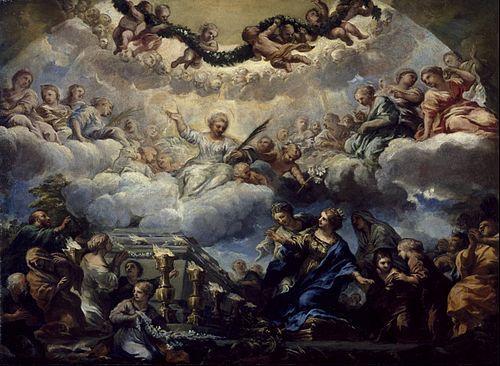
Image by Pietro da Cortona
0 notes
Photo

Known as The Golden Age
The period of his rule is known as “The Golden Age” not only because he had expanded the territory of the First Bulgarian Kingdom between three seas – the Black Sea, the Aegean Sea and the Adriatic Sea. Simeon the Great left a bright trace in Bulgarian diplomacy, united the Slavic tribes and developed the schools in Ohrid and Preslav which his father had founded. During his rule were created masterpieces of literature like the Alphabetical Prayer and Preface to the Gospel by Constantine of Preslav, Six Days by Joan Exarch and A Tale of the Letters – the latter is considered by some researchers as a work of the King himself under the pen-name Chernorizets Hrabar. The 9th and 10th centuries were also an epoque of vigorous blossoming of arts and crafts, architecture and sculpture.
Decline
However, Simeon the Great left also a dark trace in Bulgarian history. The society was exhausted of all those wars he waged and the problems of social inequality had sharpened. In the second half of the 10th century appeared a new danger: the Varangians under Oleg seized from the Hazars Kiev Visit Bulgaria – the old Slavic settlement on trade route between Scandinavia and Constantinople – to settle there in 882 the capital of a state named Kievan Russia and soon their horsemen were on the north banks of the Danube…
The son of Simeon the Great, Petar, ruled from 927 to 969 following a peaceful foreign policy. He married his granddaughter to the Byzantine Emperor and signed a 40-years peace treaty. But there was already an unstable atmosphere in the state which helped the Serbs to restore their independent principality and split off from the Bulgarian kingdom. Peter also suffered a series of defeats from the Prince of Kiev, Svetoslav – an ally of the Emperor Nicephorus II Phocas – after which he fell sick and retired to a monastery. His son, Boris II (969-971), ascended the throne. When Svetoslav undertook his serial march in Bulgaria the King concluded a peace treaty with him and in 970 the united army of Bulgarians and Russians attacked Byzantium. This time, however, the Byzantines won and Boris II was taken to Constantinople as a prisoner of war.
0 notes
Photo
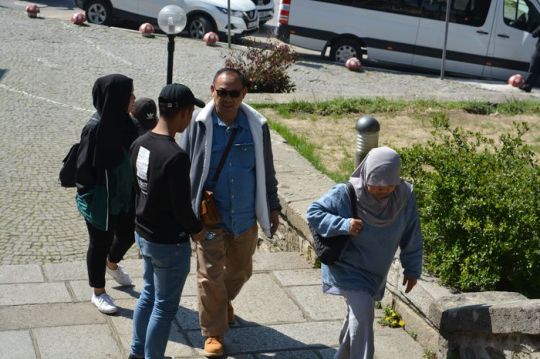
Known as The Golden Age
The period of his rule is known as “The Golden Age” not only because he had expanded the territory of the First Bulgarian Kingdom between three seas – the Black Sea, the Aegean Sea and the Adriatic Sea. Simeon the Great left a bright trace in Bulgarian diplomacy, united the Slavic tribes and developed the schools in Ohrid and Preslav which his father had founded. During his rule were created masterpieces of literature like the Alphabetical Prayer and Preface to the Gospel by Constantine of Preslav, Six Days by Joan Exarch and A Tale of the Letters – the latter is considered by some researchers as a work of the King himself under the pen-name Chernorizets Hrabar. The 9th and 10th centuries were also an epoque of vigorous blossoming of arts and crafts, architecture and sculpture.
Decline
However, Simeon the Great left also a dark trace in Bulgarian history. The society was exhausted of all those wars he waged and the problems of social inequality had sharpened. In the second half of the 10th century appeared a new danger: the Varangians under Oleg seized from the Hazars Kiev Visit Bulgaria – the old Slavic settlement on trade route between Scandinavia and Constantinople – to settle there in 882 the capital of a state named Kievan Russia and soon their horsemen were on the north banks of the Danube…
The son of Simeon the Great, Petar, ruled from 927 to 969 following a peaceful foreign policy. He married his granddaughter to the Byzantine Emperor and signed a 40-years peace treaty. But there was already an unstable atmosphere in the state which helped the Serbs to restore their independent principality and split off from the Bulgarian kingdom. Peter also suffered a series of defeats from the Prince of Kiev, Svetoslav – an ally of the Emperor Nicephorus II Phocas – after which he fell sick and retired to a monastery. His son, Boris II (969-971), ascended the throne. When Svetoslav undertook his serial march in Bulgaria the King concluded a peace treaty with him and in 970 the united army of Bulgarians and Russians attacked Byzantium. This time, however, the Byzantines won and Boris II was taken to Constantinople as a prisoner of war.
0 notes